Description
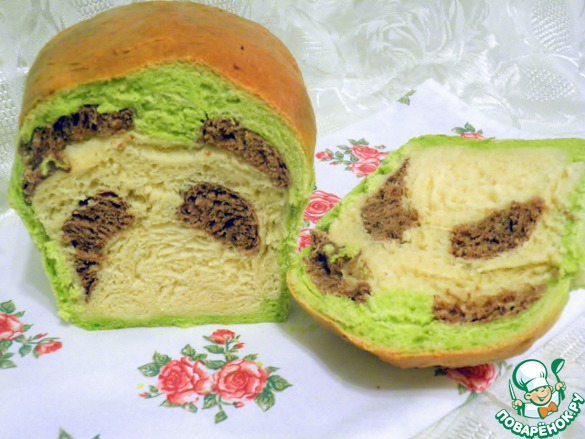
This recipe for a long time I had in the bins, but the hands still did not get it to bake. In the dough recipe is nothing new (although its structure I really liked it), but forming... Children of all ages and not just dedicated. Already posting the recipe, I realized that I have a small jubilee - the 100th recipe, I think, in a company of this bread is quite possible to celebrate my little celebration.
Ingredients
-
Flour
3 cup
-
Sugar
2.5 Tbsp
-
Milk
1 cup
-
Chicken egg
1 piece
-
Salt
0.75 Tbsp
-
Butter
1.5 Tbsp
-
The food dye
-
Cocoa powder
3.5 tsp
-
Yeast
2.25 tsp
Cooking
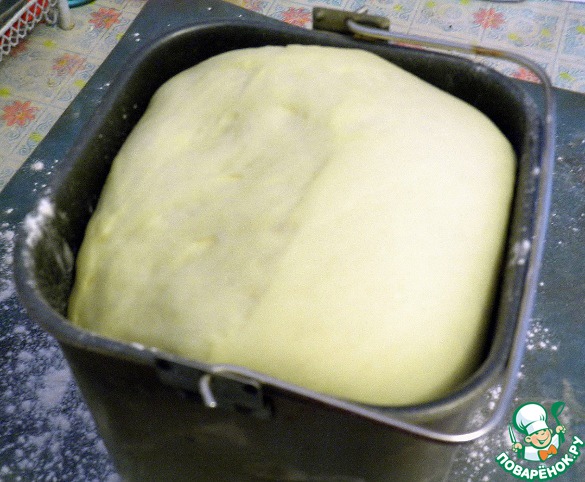
Explain why for so long this recipe I was waiting for his "finest hour". Initially I found the recipe for the dye (green) were matcha tea. We find very problematic, but when I found it, to put it mildly, rather big price I am a little sobered. Recently revised bookmarks and I have this bread again caught the eye. I put a new search on the Internet and realized that the tea can be replaced with ordinary green food coloring, which I had quietly waited his time. The fate of the recipe was solved and he went to work. The dough is pretty ordinary, but the bread turns out tasty and juicy. The main "trick" to this recipe in the forming, but this is still far away, and while doing the test. I have entrusted this work to his beloved bread maker. If you're kneading by hand, first make the dough (125 ml warm milk, 1 tablespoon of sugar and yeast), wait until foaming. Then add the remaining milk, sugar, salt, butter and yolk. Sift the flour and knead the dough. Leave on for 40-60 minutes in a warm place to raise. I just put the "dough" in HP. The dough should rise by 3-4 times. I have a small original gingerbread man almost ran out of shape.
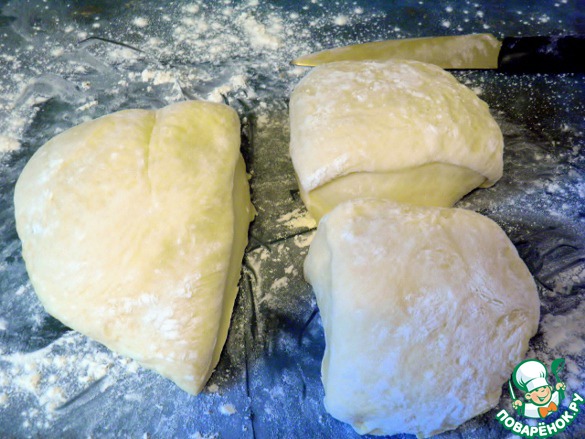
Now divide the dough into three parts: one (the largest) in the future will be colored green, the second part (a little smaller) will remain white, but the small piece will turn brown.
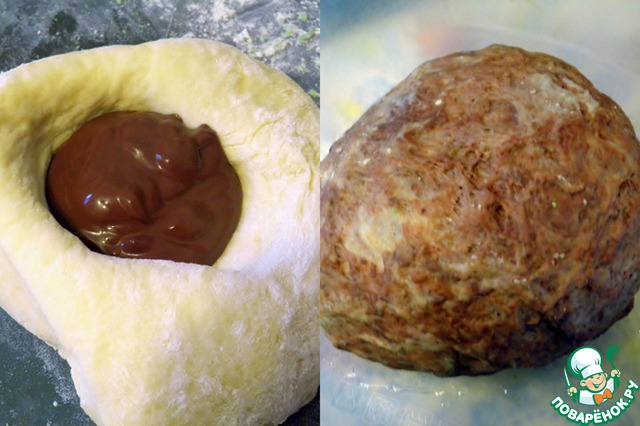
Proceed to staining. For the brown dough cocoa powder dissolve in hot water. The piece of dough make a deepening, pour it our cocoa dye and knead the dough until a homogeneous color distribution.

If you dye dry (like me), then dilute it in water first, and then all operations as with cocoa. Here is a spring green dough.
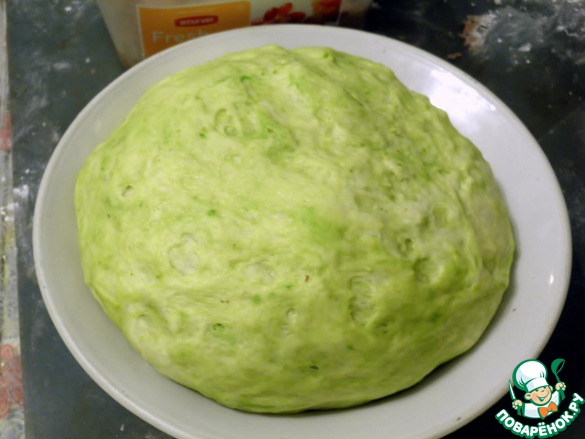
Put the dough into the right size bowls-trays, cover with film and leave for second raising. After about 40 minutes the dough increases of 1.5-2 times.

Finally we reached the most interesting - the formation of our "Panda". The white part of the dough divide into three parts: the bigger the sausage, the sausage smaller, third piece to rock in the reservoir. Laid on the table the large white sausage. Brown divide the dough into 4 pieces and roll each sausage. Two sausages stacked on white as shown in the photo. It will be our face with eyes.
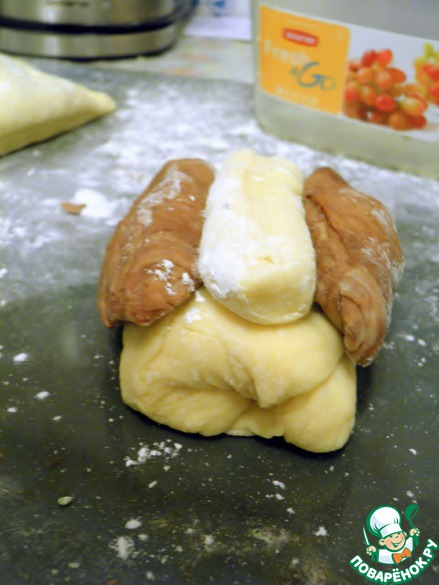
Between the two brown sausages stacked small white.
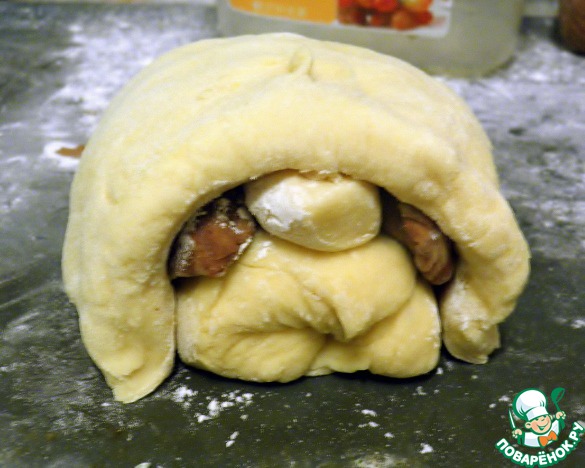
Cover all our construction layer of the white dough.
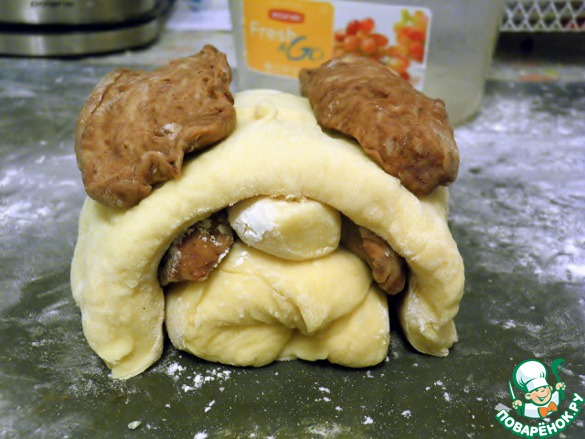
Put the two brown sausages - future ears.
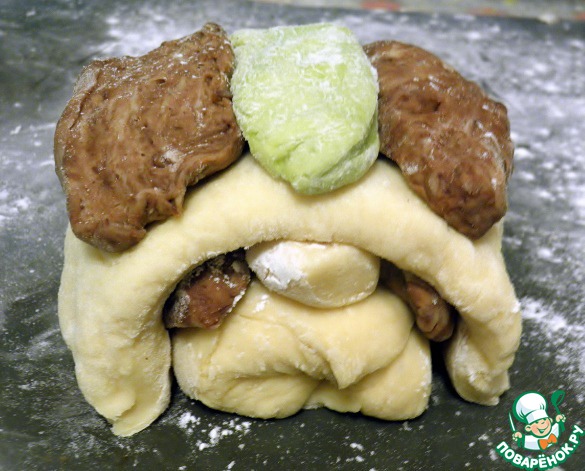
Green divide the dough into two parts: small and large. Rasschityvaet little hide the salami stacked between and brown.
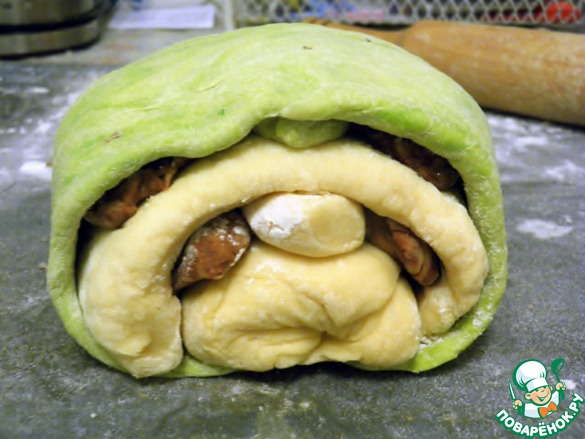
Now the rest of the green test also roll out into the reservoir and wrap it all our construction, both the top and bottom.
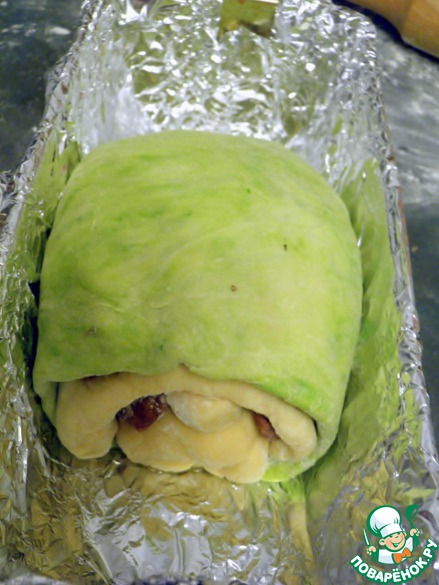
Put the resulting workpiece bread in a greased form. I have a form very old, so I prefer to shoot it first with foil - the guarantee that nothing will stick.
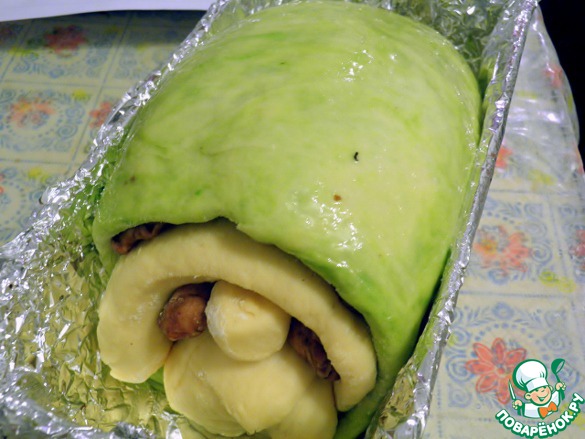
Cover with a towel and allow dough to rest and some more to come. Now optionally, you can coat the top of the remaining protein and send bake in a preheated 180-190 degrees oven for 40 minutes (focus on your oven)
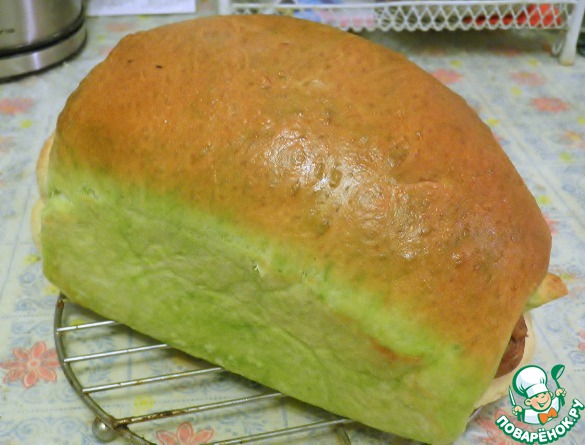
Once the bread is baked, remove it from the oven, allow to cool slightly, then remove and cool completely on wire rack. Here's a Golden-green bread we got.
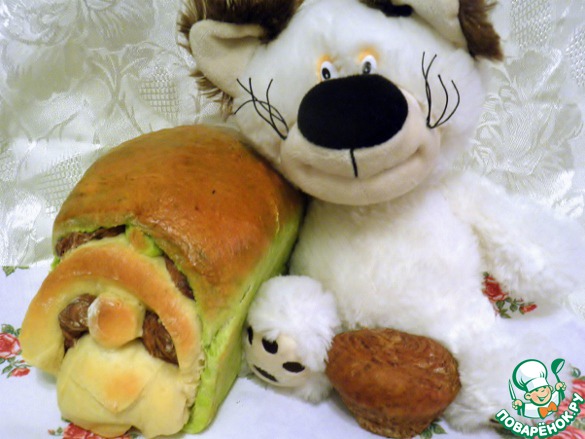
Still not very clear where strictly speaking "Panda", but now the ends of the bread look very funny :)

To understand why this bread got its name - it is necessary to cut. The first slit opens such a picture.
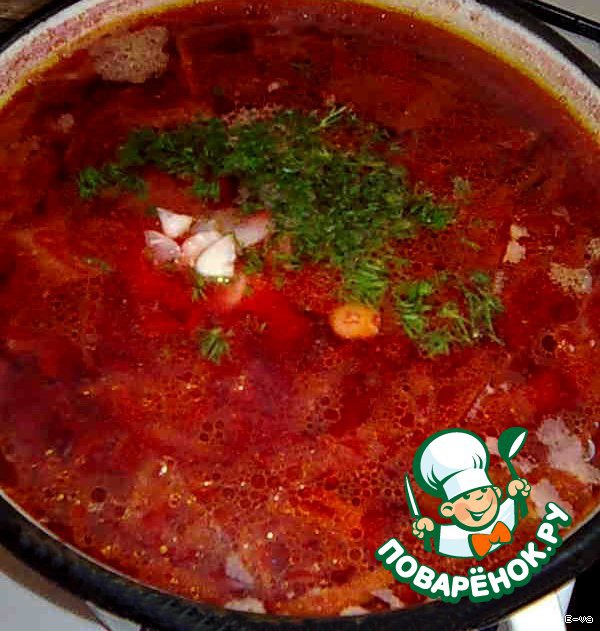
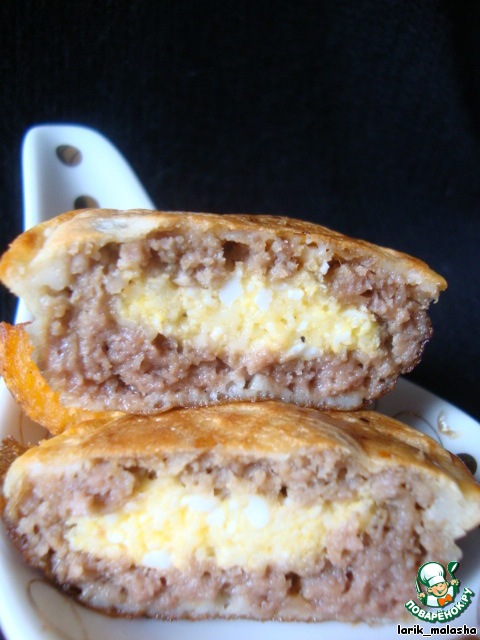
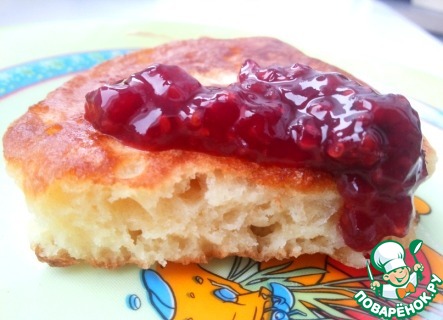
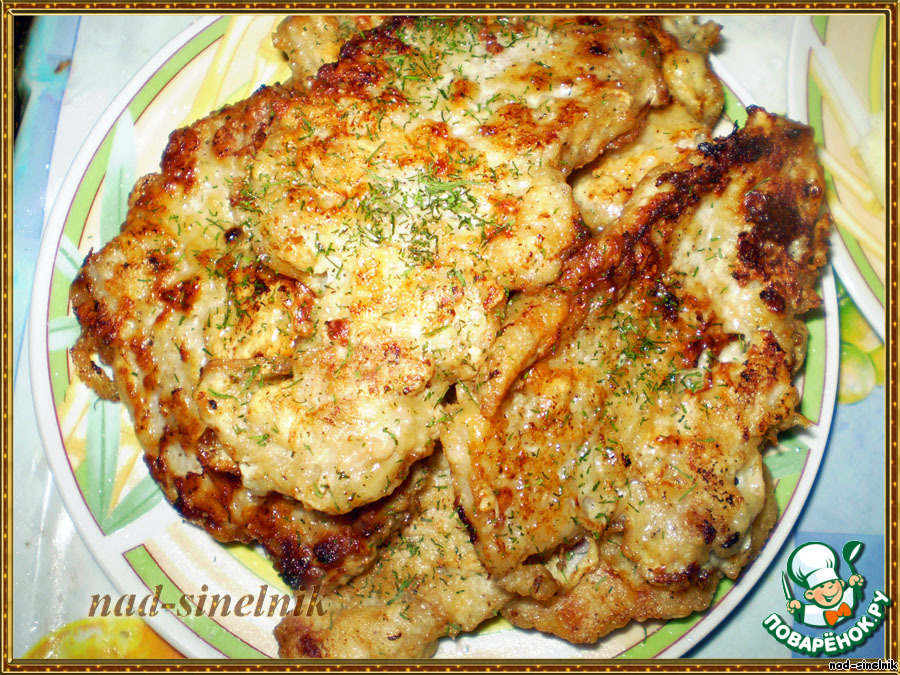
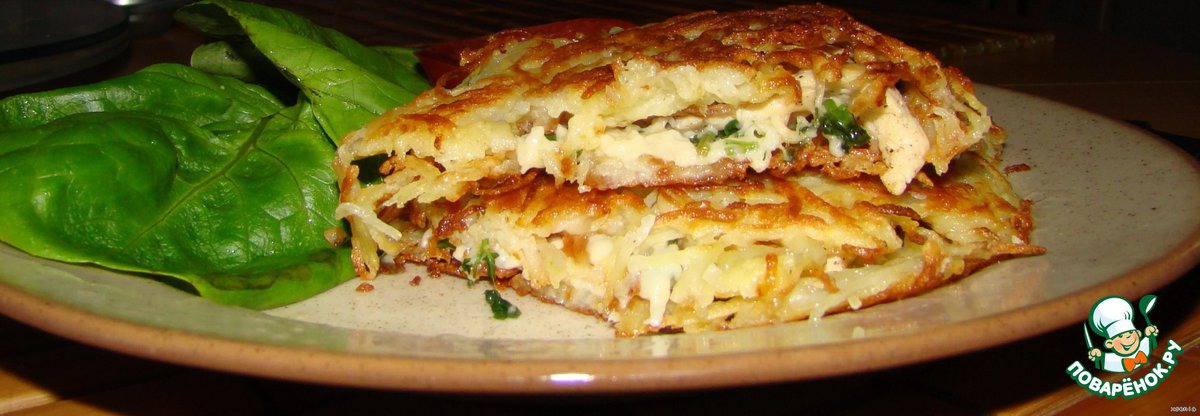
Leave a comment or a recipe review
Leave comments can only registered users.
Register, or Login if you are already registered.